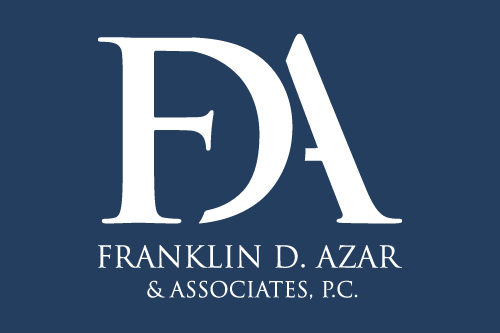Across America, communities large and small are grappling with a drug problem like nothing the nation has ever seen before. The opioid epidemic has devastated families reeling from the impacts of addiction, overwhelmed first responders scrambling to save lives from overdoses, and prompted government officials to launch investigations into the role prescription painkillers have played in triggering a public health crisis.
The scope of the problem is truly unprecedented. According to figures compiled by the Centers for Disease Control and Prevention, more than a thousand people end up in hospital emergency rooms every day because of opioid misuse, and 115 people die daily from overdoses; in many parts of the country, opioid-related deaths now exceed traffic fatalities.
Part of the death toll can be attributed to an increase in heroin use. But the CDC also cites the surge in the use and abuse of “wonder drug” painkillers, such as oxycodone and hydrocodone; deaths from prescription opioids have more than quadrupled since 1999, the agency reports. Such drugs have been dispensed so widely and indiscriminately that more than 255 million prescriptions for opioids were filled in the United States in 2012 — an average of 81 prescriptions for every 100 people in the country! In Ohio, the state that leads the nation in overdose deaths, enough opioids were prescribed that year to provide every resident, including children, with 68 pills each.
Backlash over the epidemic has forced the medical establishment to re-evaluate treatment protocols. Pharmacies, prescribing physicians and “pain management” clinics have also come under scrutiny. But much of the outrage has been directed at the companies that have made billions out of the manufacture and sale of the drugs. Dozens of state and local government agencies, from New York City to the Cherokee Nation to Huerfano County in southern Colorado (population 6500), have filed lawsuits against major pharmaceutical companies, seeking damages for the costs of battling the problem.
Although the lawsuits vary in their specific claims, they all seek to hold Big Pharma responsible for a large share of the crisis. Some observers have likened the effort to the legal campaign waged by state attorneys general against tobacco companies in the 1990s, which resulted in a massive settlement that’s helped to defray public health costs and fuel anti-smoking programs. As in the tobacco litigation, the plaintiffs contend that the prescription opioid makers have helped to create a “public nuisance” by promoting a highly addictive product through aggressive and possibly deceptive marketing — and failed to address the harm to consumers and public health services.
The analogy to tobacco litigation is useful, but also quite limited. Tobacco products have well-established health risks, even when used as the manufacturer intended. The major prescription opioid companies, including Purdue Pharma and McKesson, maintain that their products are safe when used properly and that they shouldn’t be held responsible for the actions of people who abuse drugs, become addicted, and create a black-market demand for excessive doses of the drugs.
Still, the degree to which the drug companies have contributed to the widespread use and abuse of their products is a more complex issue than most people realize. Although the addictive qualities of morphine, heroin, and other opium derivatives are well known, the development of this new generation of potent narcotics progressed rapidly, with little skepticism over claims that patients faced little risk of addiction. A 2016 Los Angeles Times investigation found that Purdue Pharma marketed its wonder drug, OxyContin, as providing “smooth and sustained pain control” for 12 hours per dose — even though clinical trials indicated that the drug wore off sooner than promised, leaving patients experiencing pain and withdrawal symptoms. Purdue’s solution to the problem was to urge doctors to prescribe stronger doses while sticking to the 12-hour relief claim, an approach that some believe encouraged overprescribing and addiction.
The drug companies also spent millions persuading prescribing physicians to adopt their products as a solution to an ever-increasing array of pain issues. According to a 2003 General Accounting Office report, during the first six years that OxyContin was on the market, Purdue Pharma “funded over 20,000 pain-related educational programs through direct sponsorship or financial grants. These grants included support for programs to provide physicians with opportunities to earn required continuing medical education credits.”
Recently CNN reported that opioid makers have been paying six-figure fees to hundreds of doctors across the country for “speaking, consulting and other services” — and that “the more opioids a doctor prescribes, the more money he or she makes.” Other media investigations have suggested that the opioid industry has failed to take measures to prevent the drugs from getting diverted to rogue pain clinics and pharmacies and then to addicts.
Establishing a direct link between the drug makers and the opioid epidemic is difficult, but several cases involving civil claims or federal enforcement actions have already been resolved. In 2015 Purdue Pharma settled a lawsuit brought by Kentucky officials over OxyContin use for $24 million, while admitting no wrongdoing. Last year McKesson paid $150 million in fines after the Justice Department accused the company of failing to report “suspicious orders” of narcotics that helped to fuel the painkiller black market.
Multidistrict litigation, consolidating lawsuits filed by 46 states and municipalities over the opioid crisis, is now being managed by a federal judge in the Northern District of Ohio. Other lawsuits continue to be announced. The Justice Department has also indicated that it intends to use its powers under the False Claims Act to investigate various components of the distribution system that may be contributing to the problem. “The False Claims Act provides the government with a powerful tool to pursue all of those in the opioid distribution chain that are responsible for the improper marketing, distribution, prescription and diversion of opioids,” Deputy Associate Attorney General Stephen Cox remarked at a recent Federal Bar Association conference.
If you or a loved one have suffered injuries as the result of a defective medical device or dangerous prescription drug, the product liability lawyers at FDAzar may be able to help. We have been helping injured people receive the compensation they deserve for more than thirty years. Call us today or contact us here for a free consultation.
Free case evaluation. Contact us now!


